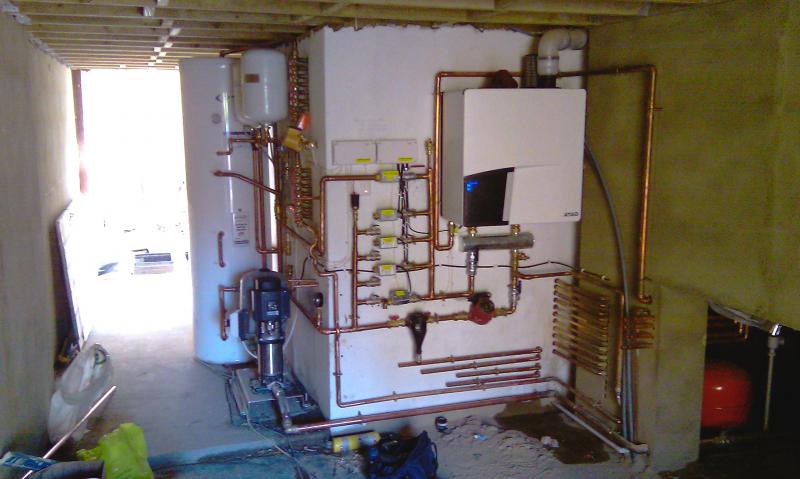J1mmy,
I was wondering what way to go in my extension. I was considering UFH all around the house and extn. One highly rated and very bright heating man, a friend of a friend, came over to talk and have a beer. He said with the UFH do not go the complicated route. He said boilers have caught up in recent years and can make matters simple and cheaper. He suggested having a Geminox boiler as it is the only one that runs down to 1 kllowatt and up to around 12 I think.
This Geminox would only do the UFH, nothing else. I think he said it would only have one pump, the variable automatic speed Grundfoss Alpha type that winds down when UFH zones close off. The zone valves would be the normal quality Danfoss 22mm, not the expensive special UFH valves, and each zone with its own stat timer.
When all zone valves are closed the boiler is off. As the boiler can run down to only 1 kilowatt, most only go down to around 6 or so, he said the boiler will not cycle and just efficiently burn away at a very low rate. This saves gas as well. He then suggested a separate boiler for the DHW cylinder or a large Japanese multi-point depending on water usage. He said this is the cheapest and best technical solution rather than complex and expensive headers, blending valves, special UFH manifolds, specialist controls and thermal stores and the rest you find with UFH. He said its is also the cheapest way as well. The Geminox boiler is set to 50C and a simple high limit pipe thermostat installed to protect the plastic UFH pipes. He has done quite a few systems using this way and never had any problems as long as the UFH pipes are laid properly and give even heat. I suppose getting the pipes right is the same with any UFH.
He said complex systems are only for commercial systems, domestic can be far simpler, and cheaper, using simple available domestic boilers and readily available kit, even if it meant using two cheap boilers. He said large domestic/small commercial boilers are very expensive and the complex controls they need really runs up the costs. He made sense to me.
In your case the second boiler can be a normal setup doing the hot water and the rads on separate zones along with the towel rail. With two boilers you have some sort of backup, although not full backup in this case as the UFH boiler cannot do hot water.
To me, his Geminox boiler route is worth considering. As you have seen there are many ways to solve the problem. Some on here appear over complex, bulky and commercial to me and hence expensive. But as this guy says, separate the functions, even if using more than one boiler for the separate functions, and make it simple. I await flack

PS. Maybe I should not have told how he does it quickly, cheaply and simply (his words), as he is inundated with work.


